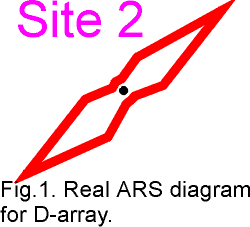Tel. & fax: (7-095) 939 49 63
E-mail: sh@geophys.geol.msu.ru
Please feel free to send us your comments.
 It
complicates data interpretation within the framework of anisotropic models,
and distorts results of interpretation in the framework of layered or inhomogeneous
media. Ignoring of anisotropy results in wrong data interpretation. At
the same time anisotropy studying can give valuable geological information.
That means that anisotropy itself and the mutual influence of anisotropy
and inhomogeneities needs to be studied. On definition, rock anisotropy
is displayed in apparent resistivity values as dependence on array orientation
and as independence on coordinates. Azimuthal (or circular) resistivity
survey (ARS) is the best field technology for anisotropy studying.
There are several problems of anisotropy which were considered in this
study.
It
complicates data interpretation within the framework of anisotropic models,
and distorts results of interpretation in the framework of layered or inhomogeneous
media. Ignoring of anisotropy results in wrong data interpretation. At
the same time anisotropy studying can give valuable geological information.
That means that anisotropy itself and the mutual influence of anisotropy
and inhomogeneities needs to be studied. On definition, rock anisotropy
is displayed in apparent resistivity values as dependence on array orientation
and as independence on coordinates. Azimuthal (or circular) resistivity
survey (ARS) is the best field technology for anisotropy studying.
There are several problems of anisotropy which were considered in this
study.
V.A. Shevnin, I.N.Modin
Tel. & fax: (7-095) 939 49 63
E-mail: sh@geophys.geol.msu.ru
Please feel free to send us
your comments.
![]()